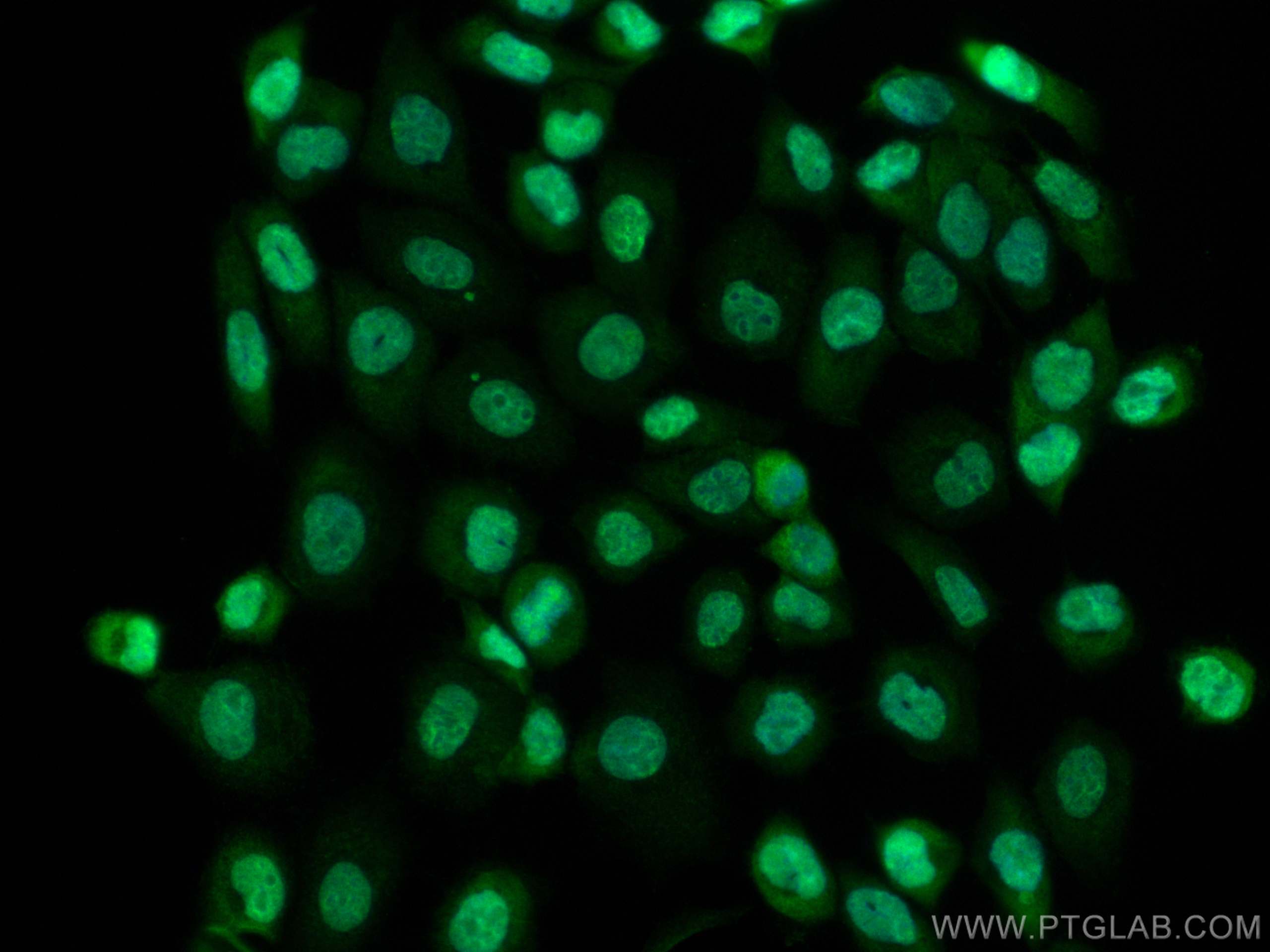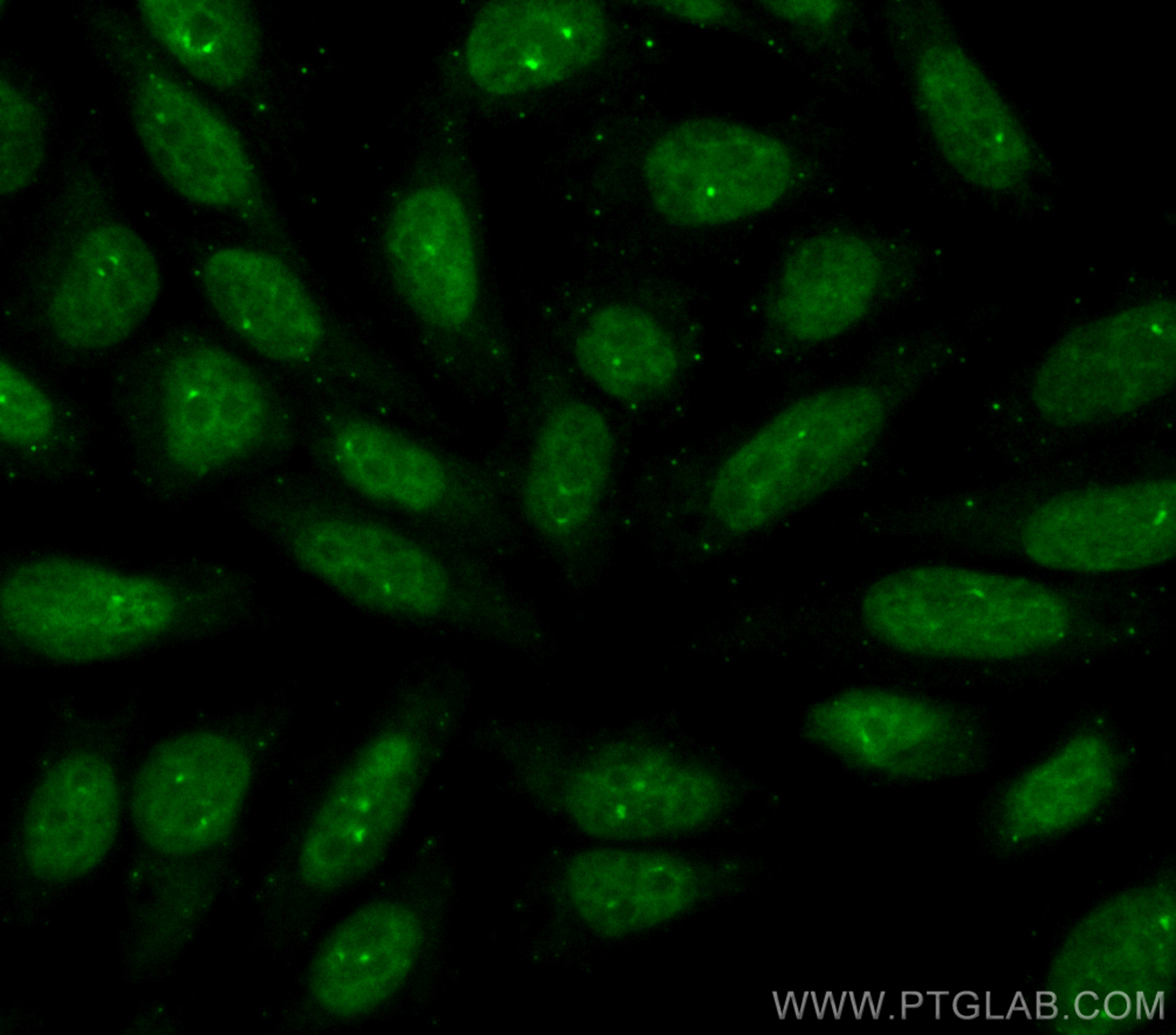验证数据展示
经过测试的应用
| Positive IF/ICC detected in | A431 cells, HepG2 cells |
推荐稀释比
| 应用 | 推荐稀释比 |
|---|---|
| Immunofluorescence (IF)/ICC | IF/ICC : 1:300-1:1200 |
| It is recommended that this reagent should be titrated in each testing system to obtain optimal results. | |
| Sample-dependent, Check data in validation data gallery. | |
产品信息
CL488-10204 targets DUSP11 in IF/ICC applications and shows reactivity with human samples.
| 经测试应用 | IF/ICC Application Description |
| 经测试反应性 | human |
| 免疫原 | DUSP11 fusion protein Ag0276 种属同源性预测 |
| 宿主/亚型 | Rabbit / IgG |
| 抗体类别 | Polyclonal |
| 产品类型 | Antibody |
| 全称 | dual specificity phosphatase 11 (RNA/RNP complex 1-interacting) |
| 别名 | DUSP11, PIR1 |
| 计算分子量 | 39 kDa |
| 观测分子量 | 39 kDa |
| GenBank蛋白编号 | BC000346 |
| 基因名称 | DUSP11 |
| Gene ID (NCBI) | 8446 |
| RRID | AB_3083866 |
| 偶联类型 | CoraLite® Plus 488 Fluorescent Dye |
| 最大激发/发射波长 | 493 nm / 522 nm |
| 形式 | Liquid |
| 纯化方式 | Antigen affinity purification |
| UNIPROT ID | O75319 |
| 储存缓冲液 | PBS with 50% glycerol, 0.05% Proclin300, 0.5% BSA , pH 7.3 |
| 储存条件 | Store at -20°C. Avoid exposure to light. Stable for one year after shipment. Aliquoting is unnecessary for -20oC storage. |
背景介绍
DUSP11, also known as PIR1, is a unique member of atypical DUSPs which could bind directly to RNA and possess RNA 5'-triphosphatase and diphosphatase activities. DUSP11 converts the 5' triphosphate of microRNA precursors to a 5' monophosphate, and regulates cellular noncoding RNAs levels. In addition to a catalysis towards RNA, more evidence showed that DUSP11 could also dephosphorylate proteins.
实验方案
| Product Specific Protocols | |
|---|---|
| IF protocol for CL Plus 488 DUSP11 antibody CL488-10204 | Download protocol |
| Standard Protocols | |
|---|---|
| Click here to view our Standard Protocols |

